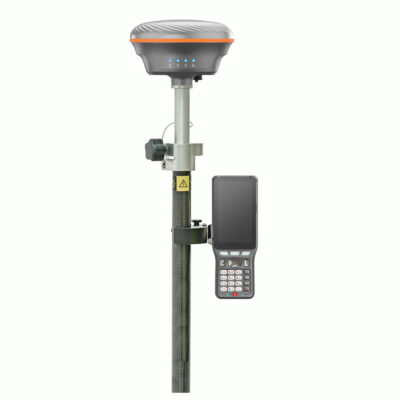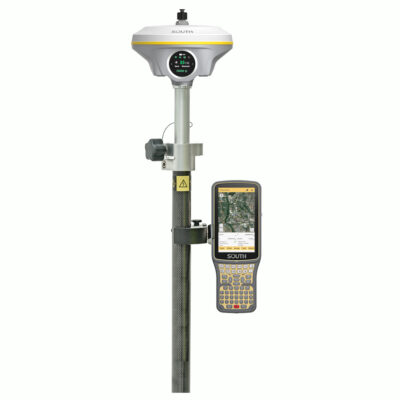RTK GPS Rover sets
Start collecting points and geo data with an RTK GNSS ROVER SET. These sets are mostly used when the surveyor needs to collect data or stakeout points or digital terrain models (DTM) out on the construction site. Most common jobs it is used for are setting out site boundaries, collecting GPS data on the location of cables, pipes, sewage drains to then export this via .DXF files into your autoCAD system, or general road and construction work. They can also be used to set out Ground control points (GCP) for drone surveying. The newer models have tilt sensors installed. These allow you to angle your receiver pole so more difficult areas become more accessible.
CUSTOMER REVIEWS
Global GPS Systems
4.76 store rating (533 reviews) | 4.66 product rating
GPS Rover Sets
Our superb range of hi-tech GPS rover sets includes versatile GNSS receivers with some of the most advanced features. A rover GPS system is a reliable choice for many surveying applications, but we also offer intuitive range of the GNSS rover that are capable of fast transmissions, making them suitable for the most challenging conditions. Tailoring sophisticated technology to suit your specific project has never been so easy.
What is a GPS Rover system?
A GPS rover system, or GNSS rover are the GPS receivers you do your surveying with. There are basically 2 setups.
The Rover RTK network setup In this Rover GNSS setup you will only need 1 GPS receiver as you will get the correction data for centimeter accuracy from an RTK network. This of course depends on the coverage of this RTK network and the internet connection you have within your region. On the
RTK FIX website you can check if your country is covered by an RTK network or not.
The
GPS rover and base station setup. In this setup you will need 2 receivers. 1 receiver you will setup as your own base station to get correction data from and the other to move around and do your surveying with. Most of the times this setup is only used when no RTK network is available.
A recommended GPS rover for sale is the
South INNO7 that includes an impressive 60 degrees IMU tilt compensator that allows you to reach the toughest places. It performs effectively as either a fixed base or moving GPS rover.
How Does a GNSS Rover Work?
A GNSS rover is more versatile than a rover GPS system as it can track signals from any satellite orbiting the earth. It's an ideal choice when you're working in a location that has access to a VRS RTK network or Continuously Operating Reference Station (CORS). As part of a GPS system, a fixed GNSS rover supplies RTCM-corrected data with an accuracy of ten millimetres.
Why Choose RTK GPS or RTK GNSS?
Where there's access to an RTK network, you are able to collect geo-data through just one RTK GPS unit. The system doesn't require you to setup another GPS receiver to act as a base station. Instead, an
RTK network uses permanently placed reference stations in different locations at intervals of up to fifty kilometres. The RTK network automatically sends corrected RTCM data directly to your rover RTK through an NTRIP protocol. An RTK GNSS unit such as the South INNO7 has internet connectivity to receive 3G, 4G and even 5G data from an RTK network.
What Determines GNSS Rover Price?
Expensive GNSS rovers usually receive signals across the entire bandwidth, whereas cheaper models typically use a reduced band. However, in the lower price category there are still high-performance rover GNSS systems available, such as the Emlid Reach RS2, which operates on a deal frequency system. The Tersus Oscar GNSS rover is slightly more expensive, but it includes calibration-free tilt compensation. A GPS receiver at the high end of the price range is the technically-advanced South INNO7. Its easy to use, web compatible interface effortlessly connects to your Android tablet or smartphone to configure and store all your collected data. It operates through a double battery system for versatile use in any location.
What is a Rover GPS System Used for?
GNSS rover sets are used in industries as diverse as mining and town planning. Rover RTK systems are practical and versatile, providing readings with a high degree of accuracy in challenging environments such as marine and offshore locations where working at speed is essential. Rover GPS systems are suitable for specialised rural and urban purposes from planning irrigation ducts in agriculture to redevelopment projects in construction.
Recommended RTK Rover systems
The sealed casing of the Kolida K1 Pro makes it ideal for all types of marine and offshore surveys. It includes a powerful Trimble BD990 board, 4 GB of memory and is fully compatible with the 4G network. For large-scale construction projects, the South INNO7 has an impressive build-in radio with a range of fifteen kilometres through the Fair Link Protocol. In congested urban areas where you need to work quickly, the Kolida K5 Infinity is effectively protected against interference and provides ultra-fast positioning with an accuracy of one to two centimetres.
Which is the Best rover GNSS System for Me?
Whether your latest project is UAV mapping or machine control, there's a GNSS rover to suit your needs. GPS rovers are ideal for common applications in many industries, but for improved accuracy, there's a wide choice of GNSS rovers. There's a rover GPS system in all price ranges, which means you'll have no difficulty in finding the best rover RTK for your project.
















